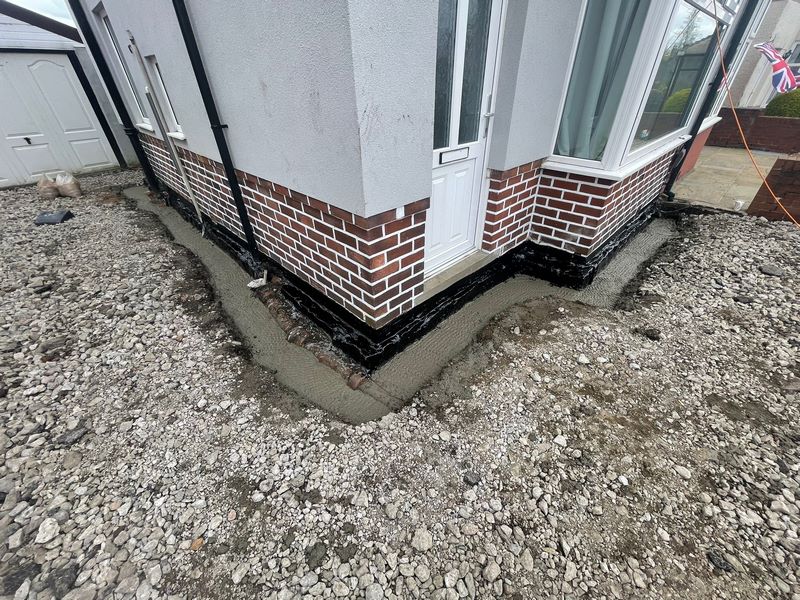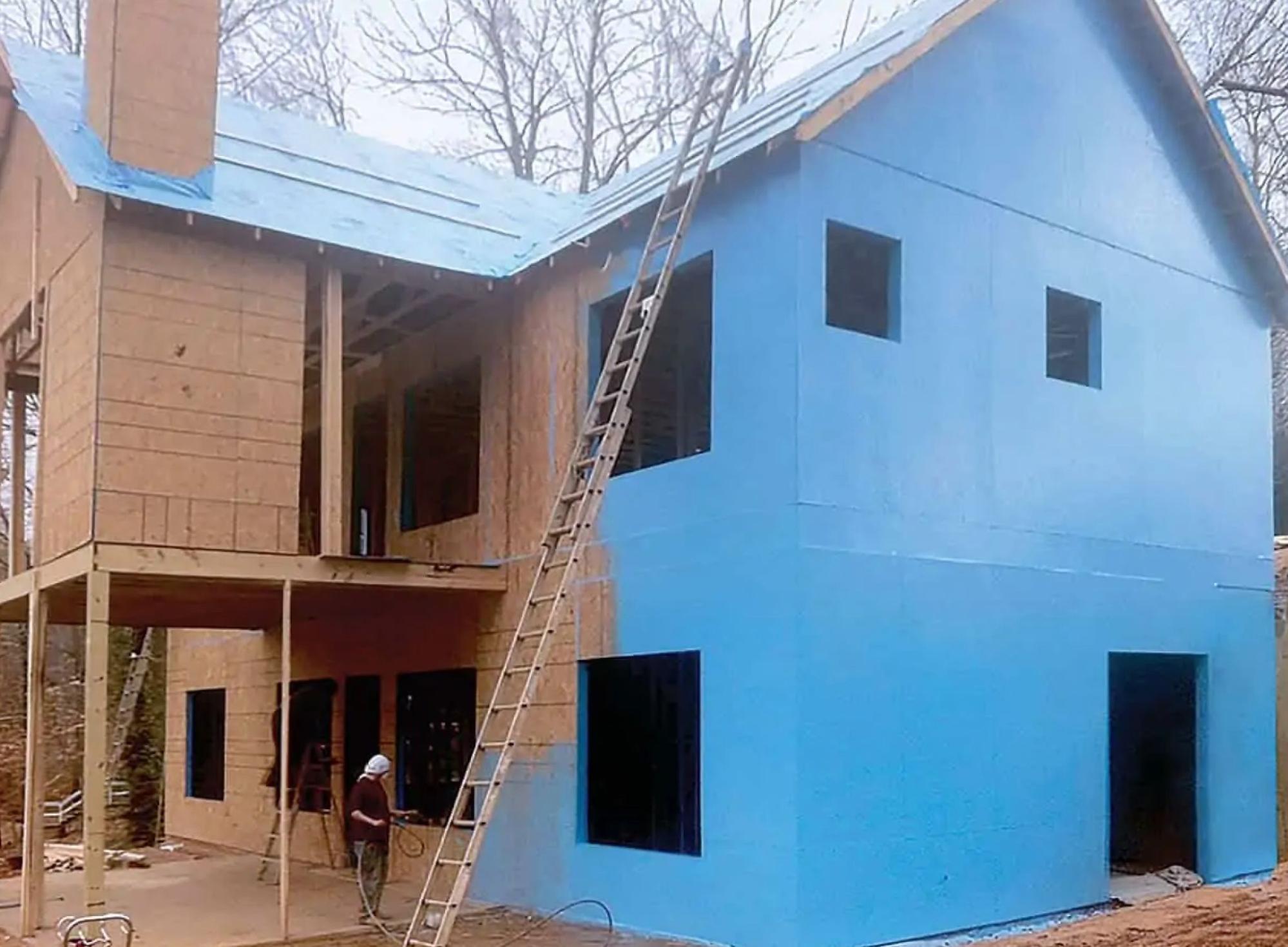Solving condensation problems permanently with mould treatment newcastle
Solving condensation problems permanently with mould treatment newcastle
Blog Article
Discovering the Numerous Strategies and Solutions for Effective Damp Proofing
Wetness in buildings presents significant challenges to both structural integrity and indoor air top quality. Different techniques and services have arised to battle this prevalent problem. From traditional damp-proof membranes to cutting-edge chemical therapies, each method supplies special advantages. Recognizing these choices is important for efficient moisture control. Picking the ideal service depends on particular building problems and requirements, triggering more exploration right into the most efficient moist proofing methods available.
Comprehending the Causes of Dampness
Although wetness can develop from various sources, recognizing these causes is important for reliable removal. Frequently, wetness stems from three primary resources: rising wet, permeating damp, and condensation. Rising damp occurs when groundwater travels upwards with permeable products, such as brick or stone, frequently due to an absence of an effective barrier (damp removal newcastle). Passing through wet is commonly caused by external factors, including roofing system leakages, malfunctioning seamless gutters, or damaged walls, enabling water to penetrate a residential or commercial property. Condensation, on the other hand, arises from excess dampness in the air, frequently exacerbated by poor ventilation and temperature distinctions, causing water droplets creating on surfaces. Determining these underlying concerns is crucial, as each kind of dampness needs a customized strategy for removal. Appropriate analysis helps in establishing one of the most reliable remedies, ultimately guarding the structural integrity of a building and boosting interior air quality
Standard Damp-Proof Membrane Layers

Chemical Damp-Proofing Solutions
Chemical damp-proofing solutions offer an innovative technique to preventing moisture invasion in buildings. These approaches generally entail the application of liquid chemicals that penetrate masonry and form an obstacle against climbing damp. Generally made use of chemicals consist of silanes, siloxanes, and various other water-repellent agents that respond with surface area products to produce a hydrophobic layer.The application procedure normally requires exploration holes into the wall surfaces, injecting the chemical service, and enabling it to heal. This approach is specifically helpful for older structures where typical damp-proof membrane layers might be impractical. Additionally, chemical damp-proofing can be much less disruptive and much more affordable than extensive restoration projects.While reliable, these remedies rely on correct application and ecological conditions for peak performance. Routine maintenance and tracking are essential to ensure the durability of the damp-proofing treatment. Generally, chemical damp-proofing represents a versatile option for securing structures against moisture-related damage
Dental Caries Wall Construction Strategies
Tooth cavity wall building and construction techniques offer countless advantages, specifically in wetness control and power performance. By incorporating an air gap between 2 layers of masonry, these walls properly mitigate water ingress while boosting insulation. This mix not only secures frameworks from moisture but additionally adds to minimized energy usage.
Benefits of Dental Caries Wall Surfaces
When considering efficient wet proofing techniques, the benefits of cavity wall surfaces stick out plainly. Cavity walls include 2 different layers, creating an air space that properly minimizes wetness infiltration. This design reduces the danger of moisture, as the external wall surface serves as a barrier versus rainfall and water ingress. In addition, cavity wall surfaces improve thermal insulation, which adds to energy efficiency by decreasing warmth loss. They likewise give sound insulation, aiding to develop a quieter indoor setting. The air space enables for air flow, which aids in dampness control and decreases the probability of mold and mildew development. These advantages not only improve the general comfort of a structure however likewise add to its durability and structural stability.
Moisture Control Methods
Efficient wetness control strategies are vital in tooth cavity wall surface construction to assure lasting defense against dampness. One key technique includes the consolidation of weep holes, which assist in water drain from the cavity, stopping buildup. Additionally, using breathable membrane layers can help handle dampness degrees while allowing trapped vapor to run away. Correct placement of insulation is additionally vital, as it must not obstruct water drainage courses. Guaranteeing that the outer leaves of the cavity wall surface are created with waterproof products boosts total longevity. Routine upkeep checks are vital to determine any obstructions or damages early, securing the framework's honesty. Eventually, a combination of these strategies forms a durable defense versus moisture intrusion in dental caries walls.
Insulation and Power Performance
Insulation plays a crucial role in improving energy effectiveness within dental caries wall surface building. By incorporating shielding products, these wall surfaces develop a thermal barrier that minimizes warmth loss and lowers power consumption. Efficient insulation not only assists keep a secure interior temperature level but also alleviates the risk of moisture, as it stops condensation within the wall cavity. Numerous methods, such as the use of inflexible foam boards or mineral woollen, can be used to achieve optimal insulation efficiency. Furthermore, appropriate installment is vital to assure that spaces and spaces are minimized, which can otherwise jeopardize power efficiency. Ultimately, a well-insulated cavity wall contributes considerably to overall sustainability and lowers heating & cooling prices for home owners.
External Damp Proofing Techniques
Exterior wet proofing techniques are vital for protecting structures from wetness infiltration. 2 effective techniques include the application of waterproof membranes and the setup of French drains. These services aid alleviate water accumulation and preserve the stability of buildings.
Waterproof Membrane Layer Application
While various techniques exist for stopping wetness access, the application of water resistant membranes continues to be an extremely efficient outside wet proofing technique. These membranes are usually made from products such as polyethylene, rubber, or modified bitumen, offering a robust obstacle versus water penetration. The setup process involves using the membrane to the outside surfaces of structures or walls, guaranteeing full protection to prevent leakages. Correct adhesion and sealing at joints are vital to making the most of effectiveness. Water resistant membrane layers can be applied in numerous kinds, including liquid finishes and sheet membrane layers, permitting versatility based upon the details needs of the structure. This approach not only secures structures from dampness yet also enhances their durability and structural integrity.
French Drainpipe Setup
One effective method for handling groundwater and avoiding wetness accumulation around a building's foundation is the installment of a French drain. This drainage system contains a trench loaded with crushed rock and a perforated pipe that reroutes surface area water away from the foundation. Appropriate installment needs mindful preparation, guaranteeing that the drain slopes far from the structure to facilitate excellent water flow. In addition, the area of the drainpipe is vital; it should be placed in locations prone to merging or excess dampness. Normal maintenance, including clearing debris from the gravel and making sure the pipe remains unblocked, is vital for lasting efficiency. Eventually, a well-installed French drainpipe can significantly reduce the threat of water-related concerns in foundations and basements.
Inside Waterproofing Approaches
Inside waterproofing techniques are crucial for securing a building's interior from moisture infiltration and potential water damage. These techniques commonly include the application of customized materials and strategies designed to develop a moisture barrier within the framework. One usual technique is the use of water-proof finishings or sealants on walls and floorings, which stop wetness from penetrating surfaces.Additionally, mounting interior drainage systems, such as sump pumps, can successfully manage water build-up in cellars and creep areas. Another technique entails using vapor barriers, which are installed to hinder moisture motion from the ground into living spaces.Moreover, attending to any type of cracks or gaps in walls or structures with appropriate sealers assures a complete defense versus water intrusion. By applying these interior waterproofing techniques, building proprietors can substantially minimize the threat of mold growth, architectural damages, and various other moisture-related issues. Correct implementation of these techniques is crucial for long-lasting defense and structure integrity.
Routine Maintenance and Examination Practices
Normal upkeep and inspection techniques are crucial for guaranteeing the lasting efficiency of moist proofing solutions in any structure. Routine checks allow residential or commercial property owners to determine early signs of dampness intrusion, such as peeling paint, mold development, and stuffy here odors. These indications can indicate underlying problems that require instant attention.Inspections need to be performed a minimum of annually, concentrating on vulnerable locations like basements, creep areas, and exterior walls. Throughout these analyses, homeowner need to examine sealers, drainage systems, and ventilation to verify they operate correctly.Additionally, preserving downspouts and seamless gutters is crucial, as blocked systems can result in water accumulation near the foundation. Applying a normal maintenance timetable, along with timely fixings, can significantly extend the life-span of moist proofing measures and protect the structural stability of the structure. Aggressive actions eventually add to the total health and wellness of the living environment.
Frequently Asked Questions
For How Long Does Damp Proofing Normally Last?
The duration of wet proofing effectiveness varies, normally lasting between 20 to 50 years. Aspects such as application top quality, ecological problems, and maintenance practices significantly influence the longevity of the damp proofing treatment.

Can I Damp Evidence My Home Myself?
The individual considered the usefulness of DIY damp proofing. With correct research study and the ideal products, it is feasible. Nevertheless, they also acknowledged the importance of specialist guidance to guarantee long-lasting performance and protect against future issues.
What Are the Indications of Inefficient Damp Proofing?
Indications of inefficient moist proofing consist of persistent stuffy smells, noticeable mold and mildew growth, peeling off paint, damp spots on walls, and timber decay - damp specialist newcastle. House owners need to resolve these concerns quickly to stop more damages and wellness problems
Does Damp Proofing Affect Indoor Air High Quality?

Just How Much Does Specialist Damp Proofing Expense?
Professional moist proofing prices vary considerably, generally ranging from $1,000 to $5,000 depending on the building's size, the extent of the moist concern, and picked approaches. Each circumstance needs a customized assessment for precise prices. Frequently, moisture stems from three key sources: climbing wet, penetrating wet, and condensation. When thinking about effective damp proofing techniques, the benefits of dental caries walls stand out plainly. Outside moist proofing methods are vital for safeguarding structures from dampness infiltration. While various techniques exist for protecting against dampness access, the application of water-proof membrane layers remains a highly reliable exterior wet proofing strategy. Indicators of ineffective moist proofing consist of persistent musty odors, visible mold and mildew development, peeling off paint, damp spots on walls, and timber degeneration.
Report this page